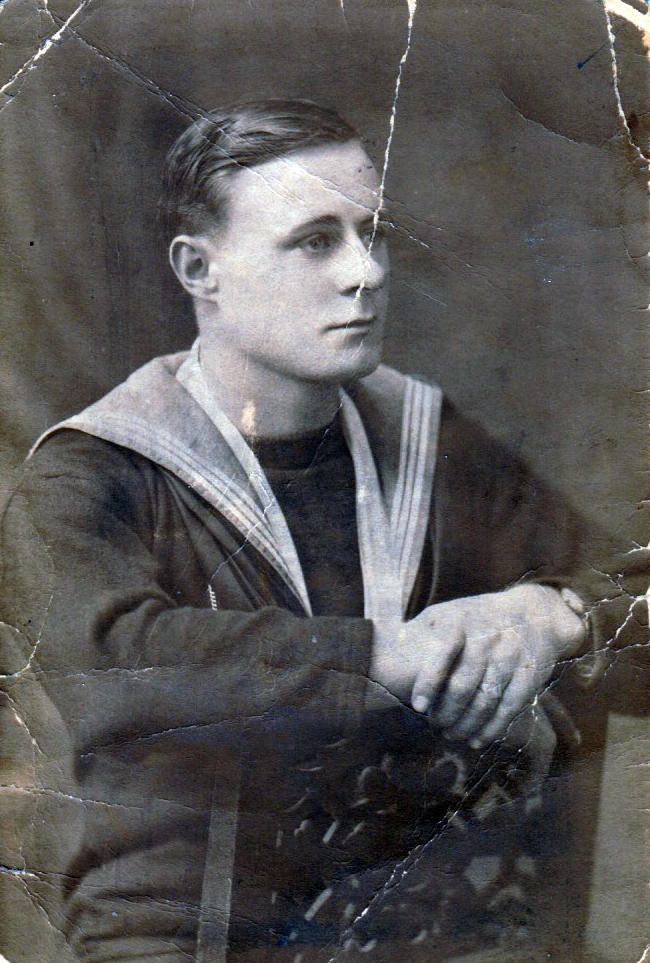
Menu
- 10am - 4pm, Mon to Sat
- Adults: £8 Under 18s: £4
- Under 12s/members: FREE
- Pensioners/students £7
- Birchburn, Scotland
- 01445 731137
- JustGiving

Written by John Perry (son)
Harold Perry – RN Service Profile
My Father, Harold Perry, was born in Birmingham, Aston, in 1903, although he spent his childhood in Exeter. The family moved from Birmingham when Harold’s father took up work in Exeter. He left his school when he was about 11 or 12 years old and went to work on a farm, lodging there with the farmer’s family. His living conditions whilst living on the farm were rather sparse and in 1919 decided to join the Royal Navy at the age of 16.
On recruitment to the RN, he joined HMS Impregnable as a Boy class 2. Impregnable was the boys new entry training establishment at Devonport. In August 1920 he was rated to Boy class 1 and drafted to his first seagoing ship, HMS Constance, which was a light C class cruiser. He was soon rated up to Ordinary Seaman (OD). Later during his time in Constance he was rated up to Able Seaman (AB); spending long periods in the West Indies based at Bermuda. Harold left Constance in January 1923 to join the RN barracks, HMS Drake, at Devonport. Here he did his gunnery qualifications in the Gunnery School, to become a Seaman Gunner.
His next draft was to the battlecruiser HMS Hood (the Mighty Hood), which he joined in November 1923. The big feature of his service in Hood was the world cruise, which they undertook in 1922/23. The ship visited Melbourne in Australia, where he met family relations who had emigrated. Harold served as a quartermaster in Hood; leaving her in May of 1925.
Harold then had a almost two year spell ashore at HMS Osprey in Portland. Here he met his wife Elizabeth Dufall from Wimborne in Dorset.
Next came a spell in Devonport Barracks to undertake further gunnery courses and qualifications; before joining HMS Queen Elizabeth a battleship which had seen service at the battle of Jutland during the 1914/18 war. The Queen Elizabeth spent much of her time in the Mediterranean based in Malta. Harold was employed much of his time as coxswain of the ships motor boat. On many occasions the then Prince of Wales (future King Edward) was a passenger in his boat. He had two spells in Queen Elizabeth, finally leaving her in May 1933.
Finally in 1933 he left the service after his twelve year engagement expired. He joined the Royal Fleet Reserve (RFR), where he undertook to do annual training periods. In 1939 he was mobilised at the threat of a war to come.
On mobilisation he joined HMS Laurentic, she was a White Star passenger ship converted to an armed merchant cruiser. Laurentic was torpedoed and sunk in 1940 off the west coast of Ireland, by U-boat U99 (Korvettenkapitan Otto Kretschmer). Luckily Harold survived, many didn’t.
NB: Some six weeks later U99 was sunk by HMS Walker.
After two weeks survivors leave, in May 1941 Harold joined HMS Reading as a Leading Seaman (Ldg Smn); later to be rated Petty Officer (PO). Reading was employed mostly on Atlantic convoy escort duties, until she was struck by a mine. She was originally a WW1 American destroyer (USS Bailey), before transfer to the RN.
In September 1942 Harold was drafted to HMS Alca, which was a banana boat taken up from trade. He was appointed as PO Coxswain of the ship. She was used as a mine layer and mine transport vessel. From my research I believe Alca transported mines and other armaments to the Soviets running out of Loch Ewe and Reykjavik. Like others Harold didn’t talk greatly of his war experiences. But he did say that his time in Alca was hard going, the Soviets would not even allow them to leave the ship in Murmansk.
Harold left the RN finally in 1946, making his home in Wimborne with his wife Elizabeth (Bett) and two sons Rodney and John. He died December 1973.
Click to expand photos